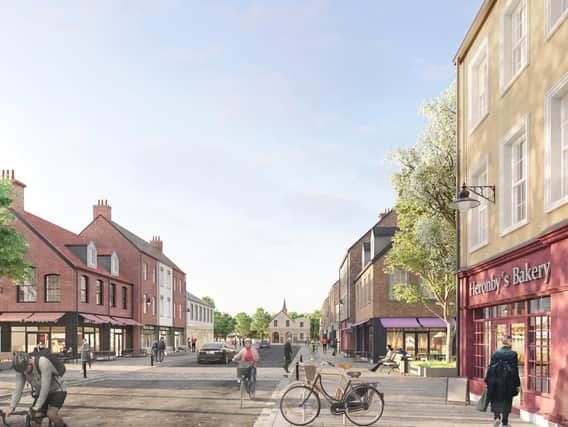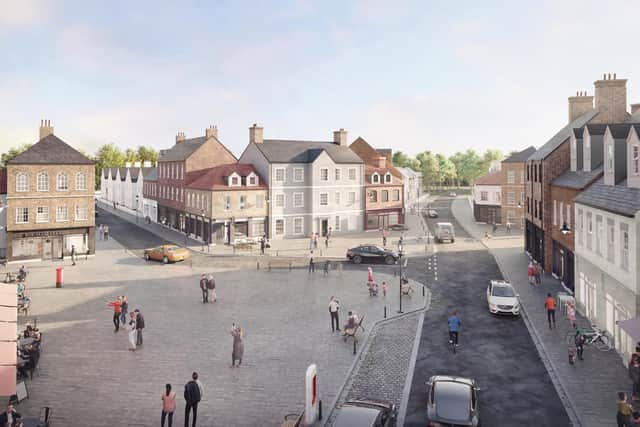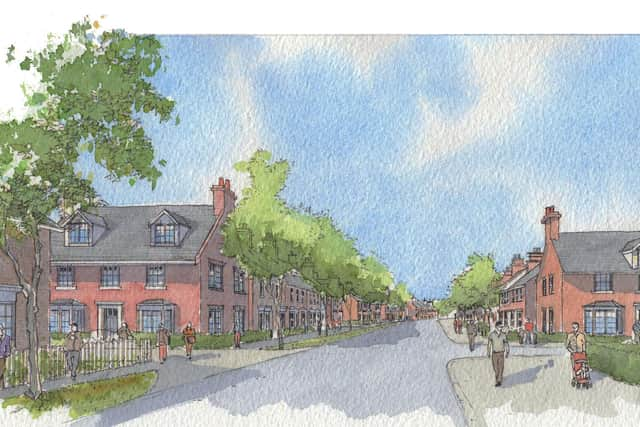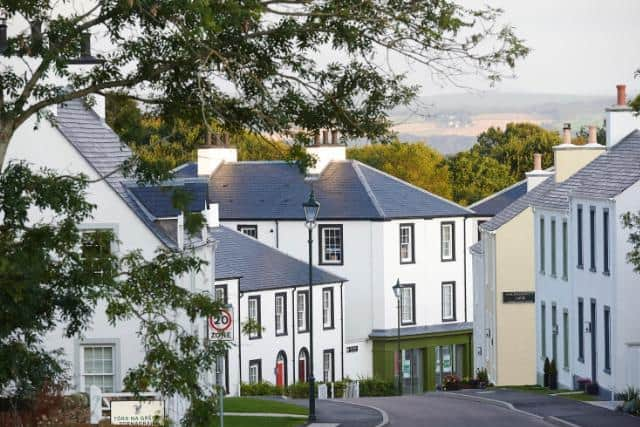The custodian of the Escrick Park Estate talks about his ambitious plan to build a new 4,000-home settlement between Selby and York


Heronby sounds rather like a BBC costume drama set in a bustling, idyllic village of the same name. Far from being a work of fiction, it is, in fact, a proposed new community comprising 4,000 homes and a host of amenities on land belonging to the historic Escrick Park Estate.
If the ambitious plan gets the go ahead, it will be an epic build spanning 40 to 50 years, on a 241-hectare site just off the A19 between York and Selby.
Advertisement
Hide AdAdvertisement
Hide Ad“It will go on for most of my lifetime,” says Beilby Forbes Adam, 34, the latest custodian of the estate, which has been in his family for over 350 years.


Like many historic country estates that once drew most of their income from farming, 7,000-acre Escrick has had to diversify to survive. The big house, Escrick Hall, has long been leased to Queen Margaret’s, a private school, and, along with farming, forestry and residential tenancies on the estate land, there is now Hollicarrs, a popular holiday park, along with commercial and light industrial space for rural businesses.
The idea of creating a new village was sparked by Selby Council’s new Local Plan consultation, which suggested that one or more new settlements could help meet much of the area’s housing needs and employment space requirement for the years ahead. The alternative is to give planning permission to a host of new housing developments with no amenities that are tagged onto or into existing towns and villages. This will put extra pressure on existing schools, GP surgeries and other facilities.
Heronby would have its own market square, park, a high street with commercial space for a cafe, shops and other businesses, two primary schools and a high school to serve the 4,000 homes that will be designed for families, first-time buyers and older people. The architecture would be traditional and the materials clay tile and brick to ape the local vernacular.
Advertisement
Hide AdAdvertisement
Hide Ad“I went on a tour of new settlements in the UK. A lot were tack-on extensions with no amenities so they were simply dormitory villages with no sense of community,” says Beilby. “It was clear that to be successful and to attract public transport links we needed to include schools, commercial premises and other facilities. It was the right thing to do.”


Selling the ‘big can be beautiful’ concept has gone well so far. An initial public consultation, held online last year due to the pandemic, saw 6,000 largely positive responses and suggestions, while the reaction to an exhibition of the plans, held at the Escrick and Deighton Club, in Escrick village this week, is now being assessed.
For those who worry that the promise of abundant facilities may be broken, there is assurance via Turnberry, a respected provider of strategic development and town planning advice to large estates, which is working on Heronby. Turnberry has helped in the design and delivery of Tornagrain, for the Moray Estate in Scotland.
It is also involved in Chapelton, a new town in Aberdeenshire, being delivered by the Elsick Development Company, a family-controlled company representing the Duke of Fife and neighbouring landowners. Businesses there include the Teacake cafe, which has enjoyed huge success.
Advertisement
Hide AdAdvertisement
Hide AdPaul Roberts, a director of Turnberry, says: “Settlements of 2.800 of more homes have the potential to encourage facilities. For councils, they offer long-term certainty of housing land supply. This is the most sustainable way of delivering new homes. Plus, you can see from the design of the houses already built in Tornagrain that they are very different to the usual housing developments.”


People have been surprised about the time it has been to build a new village/small town, but Paul Roberts says: “If you think of the smaller developments of 200 houses and the time they take to construct and to sell, then it puts it into perspective.”
He also points to Prince Charles’ flagship new town Poundbury, on the outskirts of Dorchester. The Duchy of Cornwall’s masterplan was produced in 1989 with work starting on the site in 1993. It now has 2,200 homes and is not due for completion until at least 2026.
Creating new villages and small towns is still rare, largely due to the economics and the timescales involved, though there are many historic examples that shine a light on how successful they can be. New Earswick, in York, is one. Designed by architects Barry Parker and Raymond Unwin for chocolate magnate Joseph Rowntree, the model village is still one of the finest examples of how to create a community and a pleasurable place to live.
Advertisement
Hide AdAdvertisement
Hide AdBeilby Forbes Adam says of his plan: “The fact we own the land already is an advantage. We don’t have shareholders like the big housebuilding companies. We are prepared to take a long-term view that would be prohibitive for most developers.”
The road from proposal to realisation is lengthy and begins with a bid to win inclusion in Selby Council’s Local Plan early next year. It could then take another four years to win planning and detailed planning approvals and to equip the site with the basic infrastructure it needs before phase one of development. Then, the first batch of homes, a cafe and a primary school will be created.
If Heronby gets the go-ahead, small to medium size developers will be invited to tender for the serviced plots with a strict design code included. “We don’t want an ‘anywhereville’ place,” says Beilby, who adds: “With a tail wind, the first residents could be living there by 2024 to 2025. For more details visit www.heronby.co.uk.
Echoes of garden cities schemes: Beilby Forbes Adam says of the plan to create a new village/small town: “This is a really exciting model that echoes the garden cities movement. It is something that could be rolled out by other landowners who have a long-term interest in the communities they serve. That could include the Church, the Crown and universities. Rather than just building homes, the emphasis is on creating sustainable communities.”
Advertisement
Hide AdAdvertisement
Hide Ad*Please support The Yorkshire Post and become a subscriber today. Your subscription will help us to continue to bring quality news to the people of Yorkshire. In return, you'll see fewer ads on site, get free access to our app and receive exclusive members-only offers. Click here to subscribe
Comment Guidelines
National World encourages reader discussion on our stories. User feedback, insights and back-and-forth exchanges add a rich layer of context to reporting. Please review our Community Guidelines before commenting.